An unpleasant smell of dampness, black specks and islands on the rubber parts and plastic of the washer - this is a fungus. Mold in a washing machine multiplies quickly and leads to the fact that the equipment cannot be used properly. It also gives things an unpleasant characteristic odor and can cause allergies. How to overcome the fungus and prevent its formation in the future, further.
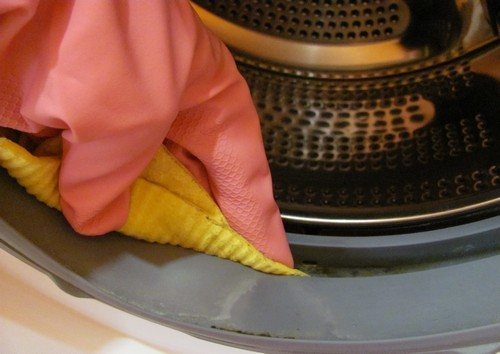
Black mold spots
Mold is characteristic black dots, which then gather into islands, grow, and thicken. Fungus in washing machines is formed as a result of improper care, ignoring the need for preventive cleaning and rinsing.
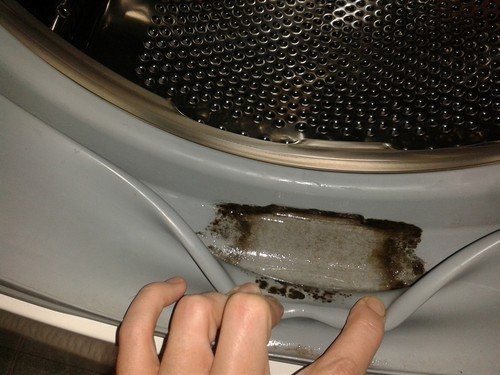
What is the danger
Fungal spores are present in significant quantities in atmospheric air masses. For example, a perfectly washed apartment only seems so, since for every cubic meter there are 500 mold spores. Constant inhalation causes chronic rheumatic pain, migraines, allergies, and asthma attacks. If the immune system is normal, there may be no unpleasant consequences; when it is weakened, unwanted reactions always appear.
Fungus loves:
- high temperatures (heat);
- dampness;
- lack of normal ventilation.
Both the mold itself and the factors that caused it need to be eliminated. If you don't do this, the problem will progress. Machines installed in bathrooms are a priori at risk, since it is very humid here. But it’s one thing to wash the tiles and another thing to clean the insides of the washer.
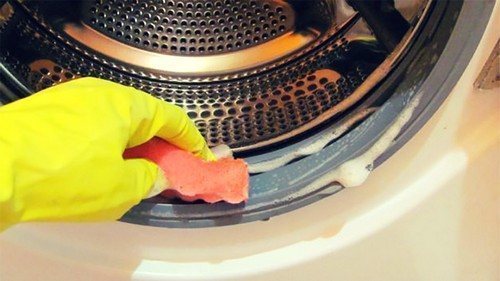
Causes
Black spots of mold in the washing machine appear in the absence of proper care and incorrect operation, namely:
- Regular quick washes - “express mode” is fast and saves time, but it is low temperature. This means that the drum is not normally disinfected at all. 60 degrees kills mold on its own, and 30-50 literally creates fungal colonies.
- The use of laundry detergents without bleaches - that is, active ingredients that prevent the appearance of mold. If you use only gentle gels, powders without chlorine and phosphates, fungus will appear quickly.
- Conditioner without additional rinse - rinse aid softens fabrics, makes them soft, but requires longer washing. Poorly washed fabric softener forms a bluish coating on the walls of the washing machine - an ideal environment for fungus.
You can get back the lost time - remove any mold that appears, and use the washing machine correctly in the future.
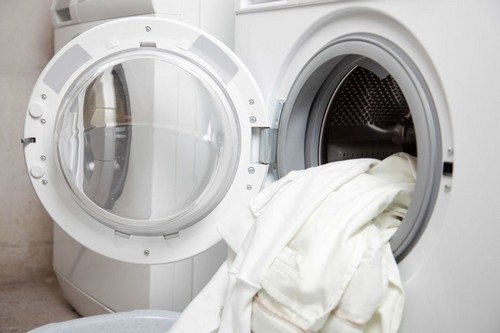
Signs of appearance
To remove fungus, determine its habitat. Mold loves:
- rubber seals;
- dispenser trays;
- hoses.
First, try to remove the mold with soap or powder and a brush. Then treat problem areas with an anti-fungal compound (you can buy it at any hardware store). There are special chemicals for treating washing machines - please note. Check the walls of the tank - mold is less common there, but it also happens.
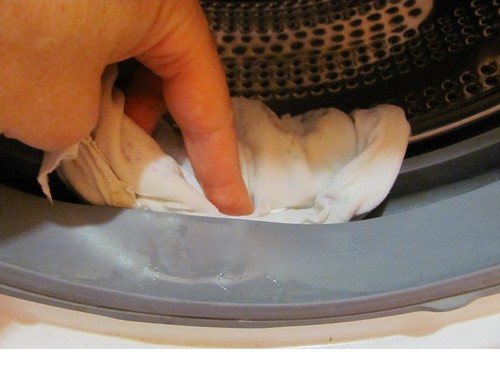
Cleaning procedure
Cleaning mold off yourself is not difficult. Let's consider the procedure for carrying out work on various parts of equipment.
On rubber
To clean the gum, use a light solution of vitriol. It is applied to the sealant and left for a day, then washed off.Use liquid soap or washing powder to remove any remaining product. Avoid contact of vitriol with paint or enamel.
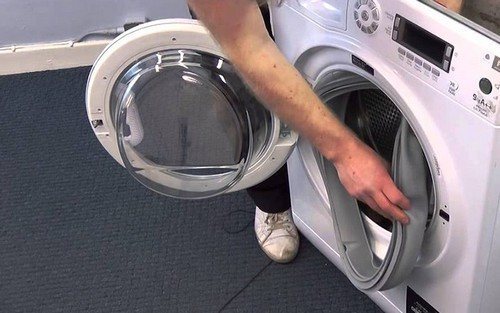
Inside the drum
You can clean the drum with regular citric acid. The powder is poured into the tray and a high-temperature wash is started for at least an hour. Another option is to pour a liter of bleach into the drum, set the maximum permissible temperature, and select a long wash cycle.
Good to know. If after cleaning the drum, cuff, or tray in an automatic machine, the smell of dampness remains, the fungus has grown. Walk through the filter valves.
In the compartment
The powder compartment “sours” often. You need to wash it regularly - with soap or powder; for persistent stains, use citric acid, regular whitewash, vinegar. After washing, the tray is dried.
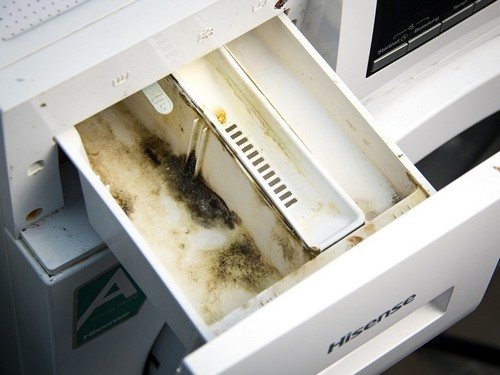
Inside
This section is dedicated to, how to get rid of mold in advanced situations. You cannot clean the drum manually with a sponge, so:
- Pour a liter of regular white into the powder dispenser and run a long wash. In the middle of the cycle, pause for 30-60 minutes.
- Pour a couple of glasses of 9% vinegar into the measuring tank. Do a rinse.
- Wipe all parts dry. Remove the container and dry it.
Leave the door open for 1-2 days. The method is effective even in very advanced cases. Do not use vinegar and bleach together - it will be too much.
In the drain hose
When cleaning the drum, the drain hose is cleaned. In most cases this is enough, but sometimes other measures must be taken.
Turn off the washing machine from the network, turn off the water, remove the hose from the machine (place a container, as water may flow out).Use a Kevlar cable with a non-metal brush. Walk along both sides of the hose and rinse with hot water.
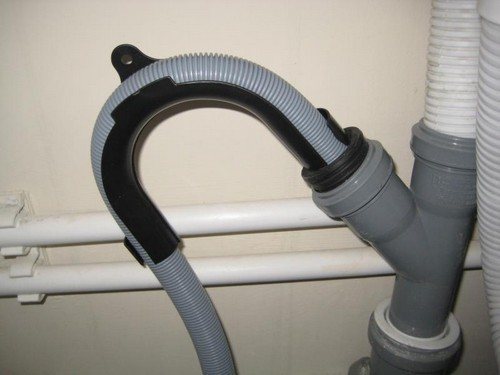
In the filter
Turn off the water supply, remove the hose through which the liquid is poured. Pry up the filtration element and remove it (pliers or tweezers will help). Remove the valve from the tube very carefully so as not to touch the parts. Start cleaning - wipe the filter mesh and the filtration element itself with an aqueous solution of bleach or vinegar. Rinse with water.
Mold Remedies
Let's look at how you can remove mold. Available options include household chemicals, professional products and just hot water.
Temperature
High temperature washing is the main protection against mold. If you use it regularly to treat things, there is a 90% chance that fungus will not appear at all. You can set high temperatures after removing mold by other methods in order to consolidate the result.
Effective cleaning method:
- Run your wash cycle with chlorine bleach.
- Pause mid-cycle.
- Let's finish the wash.
- Pour a couple of glasses of vinegar essence into the dispenser and start rinsing.
After this procedure, even very stubborn mold stains disappear.
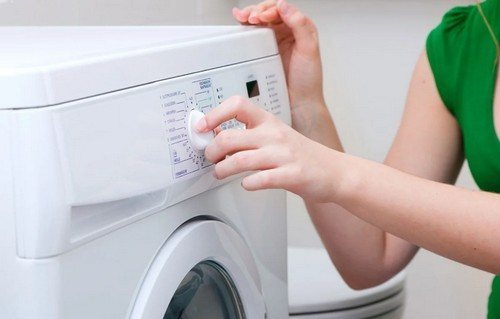
Self-cleaning mode
An effective and simple way if your washing machine has such a mode. It involves about 3 hours of high temperature washing. For maximum effectiveness, use powder or bleach.
Copper sulfate
Copper sulfate is a popular folk remedy for fungus used in agriculture. It is also suitable for removing mold in the washing machine. Please note that beautiful small crystals of vitriol are a powerful poison. Use vitriol in extreme cases.
Processing order:
- Prepare a solution of 5 liters of water and 50 g of powder.
- Wear protective gloves and apply the solution with a sponge to the areas affected by mold (drum, cuff, container).
- Leave to act for 3 hours to a day.
- Start the rinse program.
- Ventilate the drum after finishing the wash.
Vitriol is an ideal option for cleaning the insides of equipment.
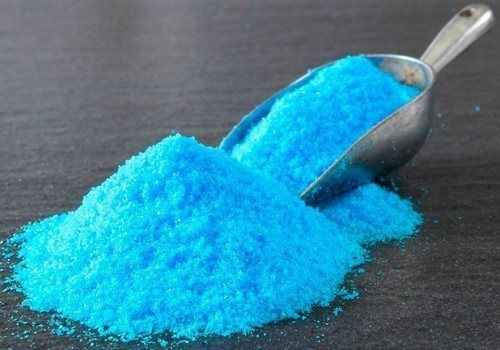
Lemon acid
Citric acid removes both mold and unpleasant odors, but it will not help with large-scale colonies. Typically, acid is used if there is a pronounced damp aroma. You can run the machine for prevention - pour 200 g of product into a washed and dried tray, run a wash (long, 95 degrees). At the end of the cycle, wipe the cuff and drum dry, and leave the door to ventilate.
Hydrogen peroxide
An alternative to chlorine bleach, you need a 3% concentration. Peroxide kills fungus, removes limescale, and has an antibacterial and antiviral effect. The effectiveness of the product increases when used together with hot water. Hydrogen peroxide, while highly effective, is safe and non-toxic. The disadvantage of this method is that cleaning will take a lot of time (whitening copes with fungus faster).
Procedure:
- Pour a liter of peroxide into the drum.
- Run long wash cycles at high temperatures.
- Do an extra rinse.
Wipe and ventilate the machine.
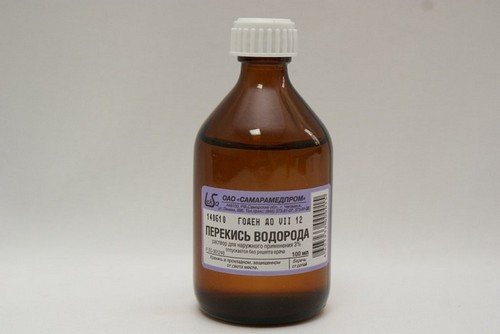
Chlorine
Chlorine bleach does not work at high temperatures, so it is used with warm and cold water. Remember that chlorine is toxic and incompatible with other products. Limescale deposits from chlorine bleach usually remain.Chlorine does not penetrate into the porous parts of the drum - mold may not be visually visible, but traces of it will remain.
For cleaning, take a liter of bleach and start the wash at 40 degrees. To completely clean the drum, do an additional rinse.
Vinegar
Vinegar works similarly to citric acid, but the order of application will be different. Use an essence solution of about 9%. Procedure:
- Pour 100 ml of vinegar into the powder tray.
- Set a long wash program with hot water.
- When the water in the drum is hot, pause for 90 minutes.
- Complete the cycle.
Wipe the working parts of the washer with 9% vinegar and start rinsing. The method removes scale and fungus well.
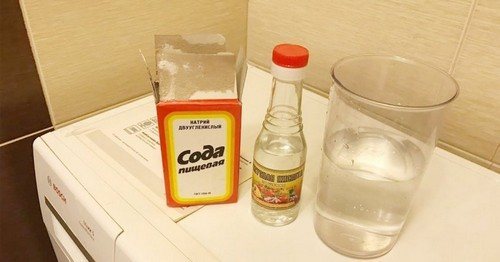
Soda
Soda solution is a simple, cheap remedy for many problems. The pulp is loaded into the powder compartment and used to clean the gum. The method copes well with mustiness due to the properties of soda to absorb unpleasant odors.
Procedure:
- Make a paste of 3 tablespoons of baking soda and water.
- Apply it to the affected areas.
- Perform light cleaning with a sponge or toothbrush.
- Leave for 30 minutes.
- Start the wash.
To enhance the effect, soda is mixed with washing powder.
White
Mold does not like acids and chlorine. Try to get rid of it using a bleach solution:
- Pour a liter of product into the tray.
- Run a long wash at maximum temperature.
- Pause for an hour in the middle of the cycle.
- Finish washing.
The advantages of the method are efficiency and low cost. To enhance the results, after washing the drum with white, rinse with vinegar.
Domestos
They resort to this method if folk remedies have not dealt with the fungus, but there is no “serious” chemicals at hand.Domestos is a universal solution to many problems, a powerful disinfectant solution. Instructions:
- Put on protective gloves, apply Domestos to moldy areas with a sponge.
- Leave for 10 minutes and wipe thoroughly.
- Run the wash without detergents.
- Add a couple of spoons of citric acid to the drum and rinse.
Be sure to rinse to wash out the remaining product.
Professional products
Professional products help well against fungus. The main ones:
- chlorine washing powder is an affordable preventive product;
- Kaneyo is a Japanese formula against mold, plaque, dirt, 0.55 l is enough to clean a 9 kg drum, the price is about 380 rubles;
- Nagara is Japanese-made cleaning tablets, 10 pieces for 130 rubles;
- HG – mold removal powder from Holland, 0.162 l is enough for a 7 kg drum, price 650 rubles.
Experts recommend professional products, saying that whiteness is not always safe for the machine.

How to get rid of the mold smell
Cleaned the machine, the fungus is gone, but the drum still smells unpleasant? Find the cause of the problem and eliminate it. Possible options:
- After cleaning with citric acid, dirt particles separated - start the boiling mode for at least an hour and a half;
- The drain hose is clogged - clean or change it;
- The heating element is dirty - clean it or change it, a professional does this.
Unpleasant odors are caused by the habit of storing dirty laundry in the drum for a couple of weeks. Buy a basket.
Mold in a vertical washing machine
In a vertical washing machine, fungus also often settles under the sealing cuff. The cleaning scheme is similar to the scheme for processing a front-loading washing machine, but there are certain features:
- Pour 3 cups of vinegar into the water-filled drum and let the machine run for a couple of minutes.
- Pour in 100 g of soda, let the components react, turn off the device for an hour.
- Make a solution of vinegar and water in equal proportions, wipe the surfaces of the device and the powder tray.
- When everything is soaked, start the wash again.
After draining the water, go over the contaminated areas with a sponge.
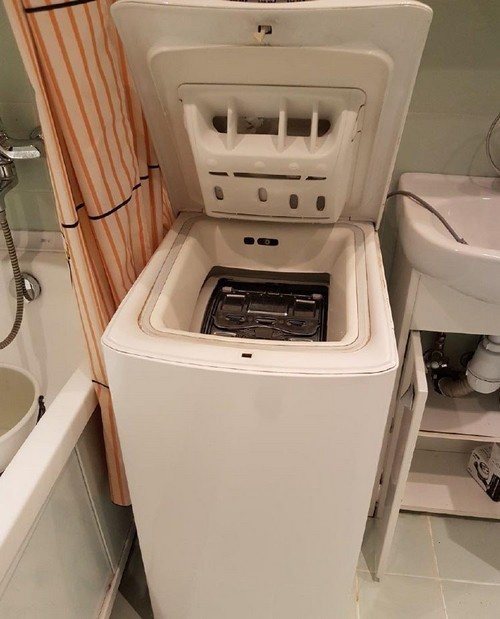
Prevention measures
Regular care and proper operation of the washing machine prevent the appearance of mold islands:
- after each wash, wipe the seal, wash and dry the tray;
- Do not keep clean, wet laundry inside the drum;
- At least once a month, do an empty wash at maximum temperature for cleaning, use bleach;
- Once every 3-6 months, do preventative cleaning with vinegar;
- clean drain hoses and filters every 6 months;
- do not use excess powder;
- ventilate the drum constantly.
It is easier to prevent a fungus from starting than to survive it later. Many of the cleaning methods described above are also suitable for prevention.
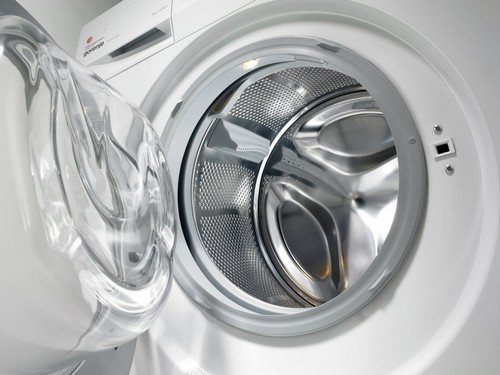
Cleaning a washing machine from mold is carried out using folk remedies or professional chemicals. Good results are obtained by using bleach, chlorine bleaches, vinegar, Domestos, soda, citric acid, peroxide. And remember that it is easier to prevent the appearance of mold than to fight it later. Air the drum, wash the tray, wipe the cuff and do not store dirty clothes in the washer for weeks.


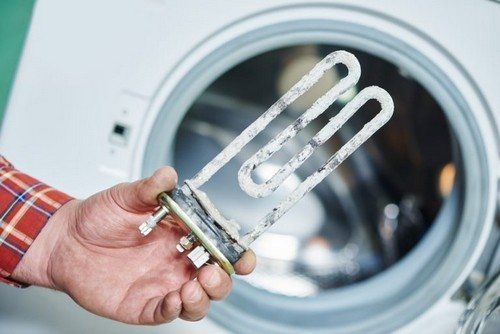

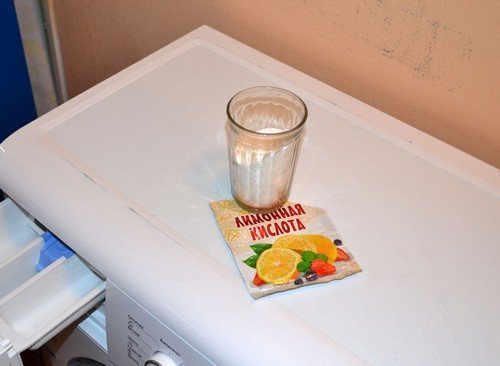
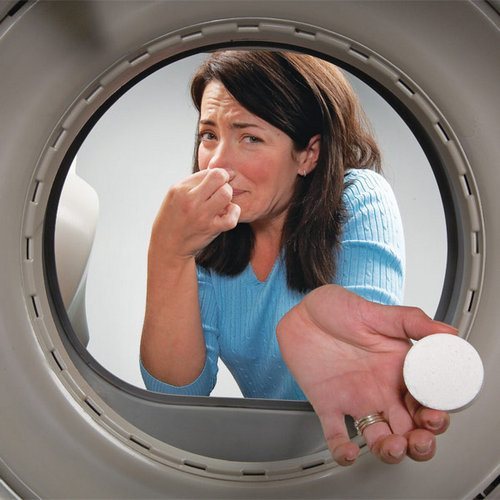
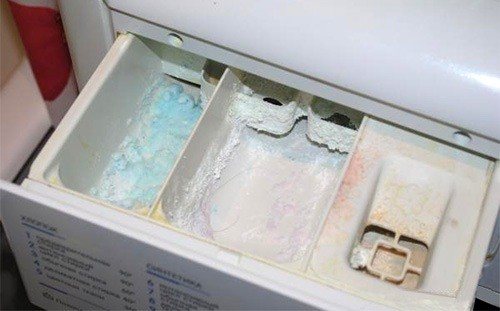
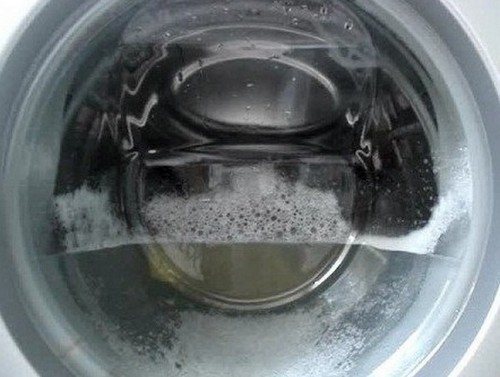
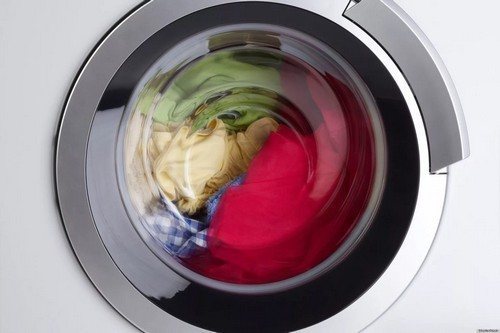

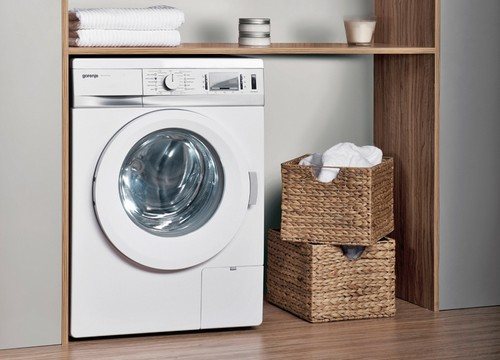
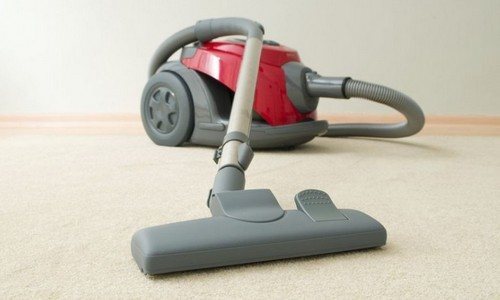

IN NO EVENT should you mix chlorine-containing bleaches (bleach, Domestos) with vinegar!!! You can be poisoned by chlorine gas, which is released from the reaction of combining these substances!
What a pity that before cleaning the machine I limited myself to only this article...
The entire Internet and videos say that the machine cannot be cleaned with whitewash or domestos. The machine is deteriorating. Only citric acid can be used to clean.